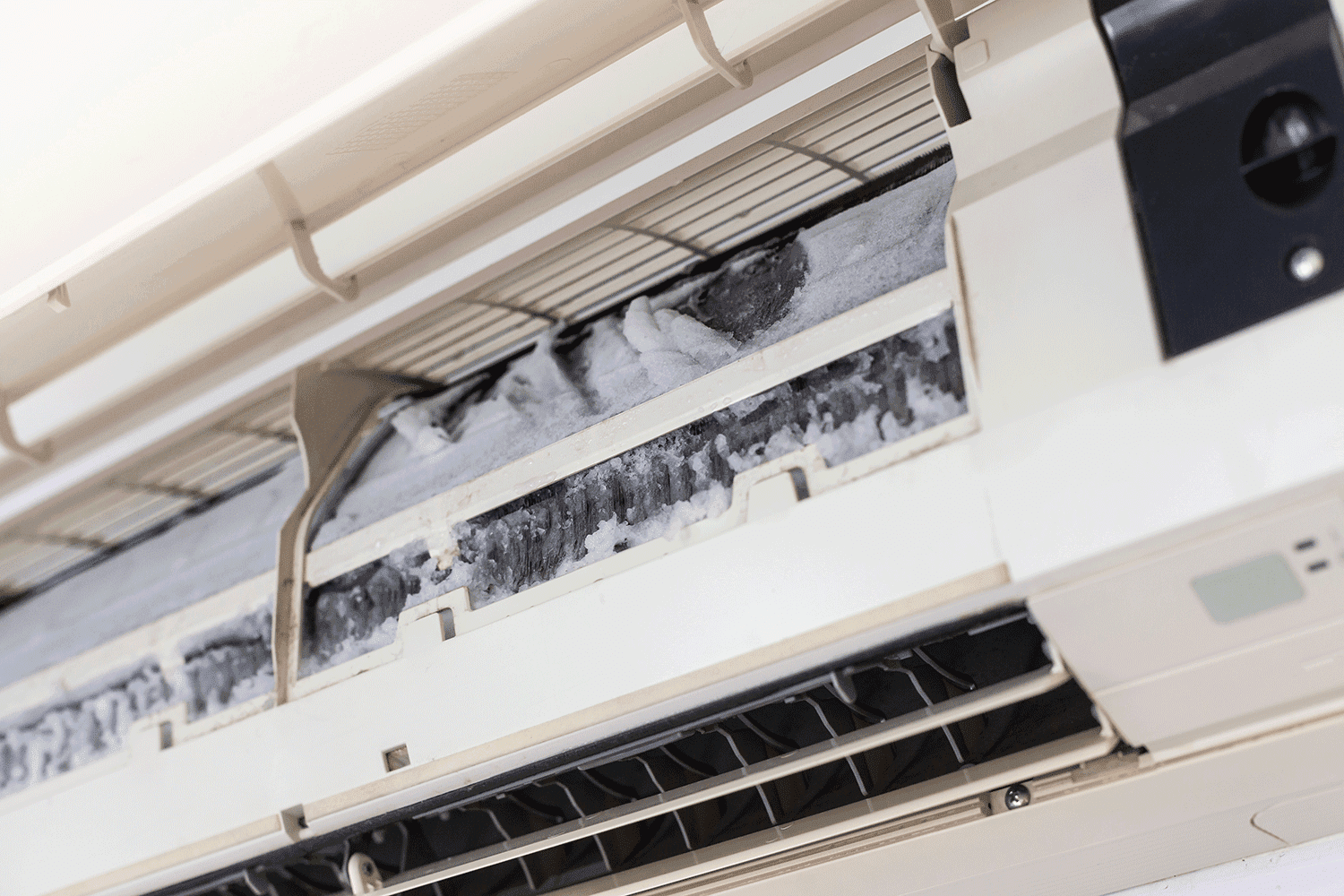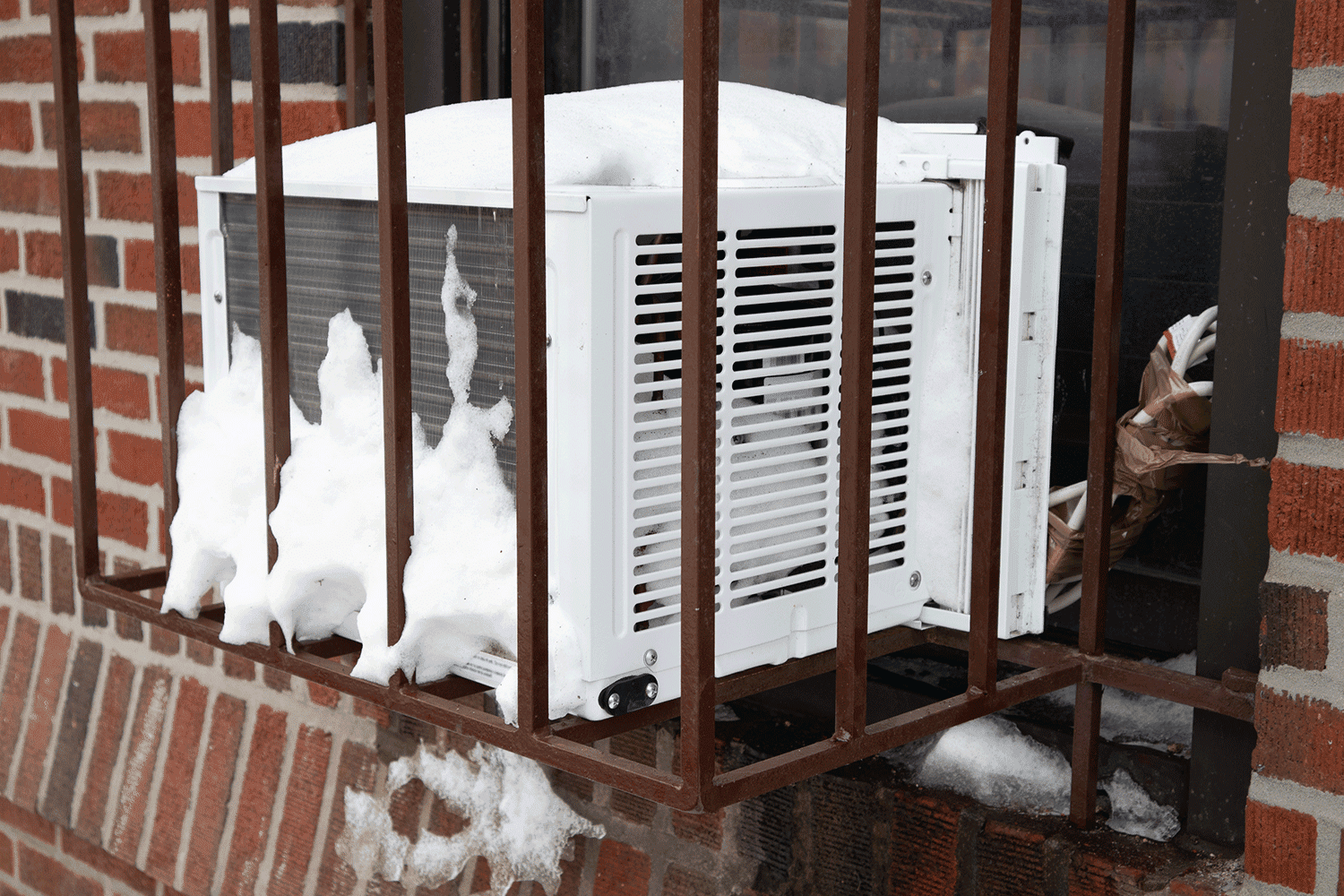A frozen air conditioner has reduced efficiency. Using the appliance while it still has frost buildup can lead to skyrocketing utility bills and irreparable damage to the cooling unit. But why is your air conditioner frozen inside? We researched the possible reasons for this predicament, and here’s what we found.
Frost buildup in an air conditioner can originate from different sources, including:
- Restricted airflow
- Refrigerant leaks
- Cold weather
Homeowners can use preventive measures to ensure their ACs don't accumulate ice from within these appliances. Continue reading as we talk about the causes of ice in an air conditioner in greater detail. We'll also tackle the precautionary actions to follow to avoid air conditioners freezing up.

How To Tell If AC Is Frozen?
Homeowners don’t need to use special tools to check if the inside of their AC is frozen. Oftentimes a screwdriver is the only tool that might be necessary to inspect an air conditioner’s internals. With that piece of equipment nearby, you can check if the cooling system has ice buildup if:
- It’s blowing warm air from the indoor handler.
- Visible signs of ice are coming out of the AC's gaps.
- The appliance shuts off after about 30 seconds or a few minutes of running.
- Opening the panel of the air handler or condenser reveals a frost buildup on the evaporator coils and/or other parts of the system.

Another sign of frost buildup in an AC is when the air handler is ejecting ice. Read our post on what to do if your air conditioner is spitting out ice to know the solution to this problem.
It’s important to note that it’s not advisable to use a frozen AC. Remove the ice buildup and repair any damaged parts before resuming the appliance’s operations to prevent long-term harm to it.
What Causes An Air Conditioner To Freeze Up?
An air conditioner can freeze inside because of how it works. It expands the coolant inside its evaporator coil, cooling down the substance. The air handler should then blow the cold air to the adjacent space. But if something is blocking that process to blow cold air, frost can form from within the appliance.
So here’s a look at the possible causes of why an air conditioner can become frozen:
Restricted Airflow
Dirty air filters can block cold air from passing through the AC's louvers, resulting in ice buildup. Experts suggest cleaning the appliance’s filter at least once per month. Properties in relatively dirty environments or those that have pets may want to have their air conditioners’ filters cleaned more frequently than usual.
Refrigerant Leaks
Old age, frequent internal vibrations, and blunt force damage to the air conditioner may cause its condenser to leak refrigerant. Also, copper wires inside a condenser unit might become corroded and crack if they come into contact with chemicals like cleaners, air fresheners, and hair sprays. If paired with a fairly cold environment, the escaped refrigerant can freeze in the unit.
Cold Weather

Outside temperature below 60 degrees Fahrenheit may put the air conditioner at risk of freezing. Homes in different states (except Florida and Hawaii) will have ACs that have a chance of acquiring frost buildup during the winter.
How Do I Keep My Air Conditioner From Freezing Up?
Property owners can apply different solutions to prevent their air conditioners from freezing. Some of these preventive measures are:
Clean the AC Filter

Take note that the specific steps to clean an air conditioner's filter often depend on its brand, type, and model. Consult your owner’s manual before proceeding with this operation to identify unique procedures to clean your AC effectively.
For example, here are the steps to clean a Daikin Perfera air conditioner filter:
What You’ll Need
- Vacuum cleaner
- Bowl of lukewarm water
- Washcloths
Step-by-Step Guide
- Hold the clips on the side of the front panel. Then, lift the front panel to open it.
- Grab the filters by their dedicated handles and remove them from the air handler.
- Slide the deodorizing filters away from their brackets.
- Use the vacuum cleaner to remove loose dirt and dust from the filters.
- Remove stubborn unclean substances by wiping the filters with washcloths dipped in the bowl of lukewarm water.
- Leave the filters outside to dry. Ensure that you set the filters in a shaded area to avoid direct contact with sunlight, which would otherwise cause damage to the components.
- Reinstall the filters and close the air conditioner’s front panel.
The video below will also teach you additional information about the steps mentioned above:
You can also read our guide on how to clean a ductless mini-split air conditioner. That post will help you in removing filth from this type of AC’s filter, along with other useful information about ensuring the appliance’s optimal serviceability.
Fix a Refrigerant Leak
If you see corroded parts, weakened connections, or signs of wear and tear on the air conditioner, a coolant leak might already be present. Repair this issue as soon as possible to prevent further damage to the cooling system.
Before implementing any DIY repairs on your air conditioner, make sure to turn it off or disconnect it from the main power source. That way, you can avoid hazards like electrocution or short circuits when you start making the fixes.
Like cleaning an air conditioner, the steps to repair a refrigerant leak also depend on the unit’s brand, type, and model. Ask the appliance maker or consult the owner’s manual to identify unique steps that might be necessary for this job.
After taking note of the precautions and other pieces of information, here’s a quick guide on how to repair a refrigerant leak from an AC’s outside condenser unit:
What You’ll Need
- Refrigerant recharging kit
- Coolant easy inject tube
- AC leak sealant
Step-by-Step Guide
- Screw the injection tube to the suction side of the condenser unit.
- Take the refrigeration hose from the recharging kit and attach it to the easy-inject tube.
- Attach the liquid line to the appropriate terminal on the condenser.
- Use the recharging kit to bleed the air slightly from the condenser unit.
- Connect the AC leak sealant to the recharge kit.
- Turn on the air conditioner and open the gauge to the liquid line slightly. Doing so will pour the sealant into the origin of the leak.
Make sure to stop applying the sealant once you see it going through the easy-inject tube and into the condenser. Then, let the sealant dry and cure before testing the AC if the leak is gone.
Check out this AC Freon recharging kit on Amazon.
Don’t forget to watch the clip below to gain additional insight on this procedure:
Buy an Air Conditioner Cover
Air conditioner covers can help retain heat inside the outside units. Using these products can help prevent ice buildup in cooling systems in the winter. However, ensure that you think about certain factors to help finalize your purchasing decision.
Certain elements of AC covers to ponder upon are the materials':
- Reliability
- Quality
- Aesthetics
- Moisture resistance
- Included warranty (if any)
Check out this air conditioner cover on Amazon.
How Do You Unfreeze A Frozen AC Unit?
It’s ideal to thaw the ice buildup in a frozen AC before attempting to fix the damage created by the frost buildup. So follow these steps to help unfreeze the cooling unit:
Step-by-Step Guide
- Turn off the air conditioner from the thermostat or through the unit’s remote control.
- If the ice is thawing slower than expected, turn on the AC but set it to its ‘Fan’ mode.
- Clean or replace the air filter if needed.
Can You Put Hot Water On A Frozen AC Unit?

It’s possible to pour hot water on an ice buildup in a frozen AC unit. Doing so will help melt the ice faster than relying on the outside temperature. But don’t directly apply boiling water over the ice, particularly when the buildup is near metal components. The result is a thermal shock, which will weaken and perhaps lead to serious harm to these parts.
How Long Does It Take To Thaw A Frozen Air Conditioner?
Ice within a frozen air conditioner can take 24 to 48 hours to thaw completely. Take note that environmental factors can alter the speed at which AC unfreezes. Find out more about how long it takes for an AC to defrost by reading our post on this topic.
Final Words
Ice in an air conditioner might appear because of a dirty air filter, refrigerant leak, or cold weather. Use appropriate precautionary measures to ensure frost doesn’t build inside the appliance. Practicing those preventive actions can help secure households from expensive AC repair and replacement costs.


